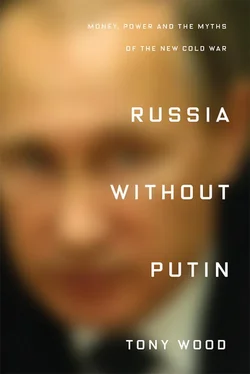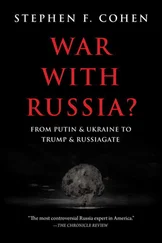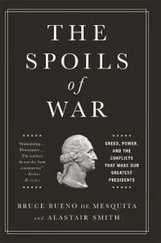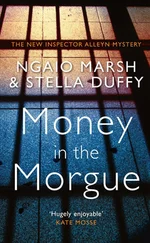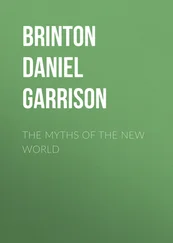Could Russia itself go the way of the USSR? The Soviet Union had separated into fifteen pieces that were already distinct, like the drifting apart of shards from an ice sheet that was already cracked. By a historical irony, the hollow constitutional structures of the USSR came to be filled with national content that helped pull the Union apart. But the equivalent scenario for Russia would mean a much more dramatic reconfiguration of the map: several of the country’s non-Russian components – the likeliest candidates for secession – are not located at its edges, but embedded within a huge landmass with a predominantly Russian population. Another wave of secessions would mean balkanization on a continental scale, turning much of Eurasia into a territorial jigsaw. This, of course, was the nightmare that had haunted Russia in the early 1990s, only to melt away in the wreckage of Grozny. Among many Russians and Westerners alike, the conventional assumption is that this devastation was the price of maintaining the country’s territorial integrity. The same reasoning has been used to legitimate the strangulation of federalism ever since: any power Moscow surrenders to the regions, the argument goes, will ultimately encourage them to peel away entirely.
Yet this logic rests on false premises. The first is that Chechnya’s example would have been emulated by other regions. Though there were certainly nationalist currents among a number of Russia’s ethnic minorities, the struggles between Moscow and the regions mostly revolved around the distribution of resources; only in Chechnya did a serious and sustained push for sovereignty develop. {21} 21 I make this argument at greater length in Chechnya: The Case for Independence , Ch. 2.
The second false premise is that since ethno-nationalism killed the USSR, any further manifestations of it would spell the same outcome for Russia. Again, nationalism framed in ethnic terms certainly did play a role in the unravelling of the Soviet system, but to attribute an entire, epoch-making set of events to this single cause makes little sense. Moreover, it neglects the critical contribution of Soviet elites, who deserted the system in droves, helping themselves to pieces of the planned economy on the way, and thus accelerated its disintegration. The important point here is that the existence of the USSR’s formally sovereign republics provided those elites with plenty of other states to desert to. From this self-interested point of view, the subunits of Russia itself – especially the landlocked ones, far removed from borders with other countries and hence from alternatives to alliance with or dependency on Moscow – are nowhere near as attractive a proposition.
But more telling still is the assumption of a necessary connection between federalism and ethno-national separatism. More than a quarter of Russia’s subunits are ‘republics’ or ‘autonomous regions’ named after ethno-linguistic groups indigenous to them. Russian nationalists see the very existence of these federal forms as a threat – Dugin, for example, has proposed their elimination. {22} 22 Laruelle, Russian Eurasianism , p. 118.
Yet in many of these ‘ethnic’ republics, the majority of the population are ethnic Russians. In these cases, ‘national’ names and symbols are a historical residue of conquest and assimilation, rather than a draft project for independence. Elsewhere, to be sure, the titular nationalities are numerically dominant: in the Sakha Republic in the Far East, in Tatarstan, in much of the North Caucasus. But as a whole, the non-Russian peripheries are far outweighed by the country’s enormous ethnic Russian core: 60 per cent of the territory, containing 80 per cent of the population. This raises an important, largely unspoken question: if the reason for killing federalism is to suppress ethno-national separatism, why does this in practice overwhelmingly apply to territories that are inhabited by ethnic Russians?
One answer is that the actual purpose of Russia’s anti-federal federalism is to maintain centralized political control over a vast territory, while shielding that power from democratic scrutiny at all levels. It is telling, from this point of view, that Putin’s response to the Beslan atrocity of 2004, when Chechen Islamist militants seized a school and took hundreds of children hostage – only for the vast majority of those present to be killed when Russian security services stormed the building – was to do away with elections for regional governments nationwide. If there were any connection between state security and degrees of local democracy, Putin should have done the opposite. In 2014, though Moscow furnished the rebellion in the Donbass with arms and troops, and to begin with noisily promoted the rebels in official media, its enthusiasm had limits: besides being pro-Russian, the Donbass militias were strongly anti-oligarchic, a stance that might potentially have popular appeal well beyond eastern Ukraine. When it came to it, the Kremlin knew which side of the barricades it would rather be on.
These reflexive moves to defend the system of ‘imitation democracy’ demonstrated that the real threat posed by federalism was not ethnic rebellions but political ones. Annexing the Donbass would have set an especially dangerous precedent, and not only in terms of international law: it would also have shown Russia’s own majority Russian-speaking regions that rebellion paid off, and that they could seize control of their own destinies through acts of political will. This was a potential chain reaction the Kremlin had to avoid setting off at all costs. The underlying risk here was not territorial fragmentation, but democratization.
At bottom, the main points of contention in Russia’s federal system derive not so much from dynamics of ethnic difference as from disagreements over the distribution of power and resources, and over the forms and character of government itself. The federal structure provides an arena in which those questions can be raised and contested, which is why the Kremlin must keep it under tight control. But as long as the federal forms exist, the possibility of such an opening remains. Political scientist Andrei Zakharov has called Russian federalism a ‘dormant institution’. {23} 23 Andrei Zakharov, ‘Spiashchii institut’: Federalizm v sovremennoi Rossii i v mire , Moscow 2012.
What would happen if it were someday to awaken?
The guiding assumption of Kremlin policy for the past three decades has been that real federalism leads to national disintegration. But this purposely ignores the potentially democratizing aspect of federalism: its capacity to make government reflect and cater to the specificities of each territory, and to bring power closer to its popular sources. In other words, though it is often seen as a challenge to the existence of Russia itself, federalism could be the site of a struggle between different kinds of Russia. It may be that the possibilities for a more democratic polity there will demand a revival and deepening of federalism, rather than its continued sedation. This might not redraw the map of Russia, as is commonly feared, but instead open up new roads for the country to travel.
The place where all of the forces and factors laid out here converge – where geopolitical pressures meet demographic trends, where economic constraints collide with questions of federal form – is in the political system. What kind of country Russia will be depends partly on who rules it, and for whose benefit. Although its options are limited in various ways, much nonetheless hangs on how the current system of government in Russia, whether under Putin or his eventual successors, responds to changing circumstances. The spike in tensions with the West has for the moment given the Putin-led system a certain amount of leeway, since it can ascribe many of the problems the country experiences to foreign enemies. It helps that this is not, factually speaking, incorrect: the sanctions regime imposed in 2014 prolonged Russia’s economic difficulties, and in the wake of Crimea and especially the 2016 US elections, Western media, pundits and politicians eagerly fanned a hostility to Russia that mirrored the hysteria of Russia’s own pro-Kremlin outlets.
Читать дальше
